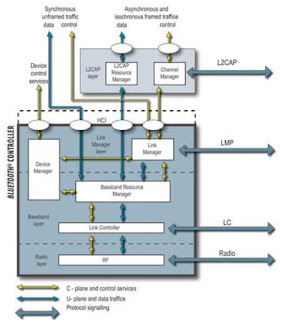Abstract
Intel’s Hyper-Threading Technology brings the concept of simultaneous multi-threading to the Intel Architecture. Hyper-Threading Technology makes a single physical processor appear as two logical processors; the physical execution resources are shared and the architecture state is duplicated for the two logical processors.
 The first implementation of Hyper-Threading Technology is being made available on the Intel. Xeon processor family for dual and multiprocessor servers, with two logical processors per physical processor. By more efficiently using existing processor resources, the Intel Xeon processor family can significantly improve performance at virtually the same system cost. This implementation of Hyper-Threading Technology added less than 5% to the relative chip size and maximum power requirements, but can provide performance benefits much greater than that.
The first implementation of Hyper-Threading Technology is being made available on the Intel. Xeon processor family for dual and multiprocessor servers, with two logical processors per physical processor. By more efficiently using existing processor resources, the Intel Xeon processor family can significantly improve performance at virtually the same system cost. This implementation of Hyper-Threading Technology added less than 5% to the relative chip size and maximum power requirements, but can provide performance benefits much greater than that.
- From a software or architecture perspective, this means operating systems and user programs can schedule processes or threads to logical processors as they would on multiple physical processors.
- From a micro architecture perspective, this means that instructions from both logical processors will persist and execute simultaneously on shared execution resources.
Hyper-Threading Technology makes a single physical processor appear as multiple logical processors [11, 12]. To do this, there is one copy of the architecture state for each logical processor, and the logical processors share a single set of physical execution resources. From a software or architecture perspective, this means operating systems and user programs can schedule processes or threads to logical processors as they would on conventional physical processors in a multiprocessor system. From a micro architecture perspective, this means that instructions from logical processors will persist and execute simultaneously on shared execution resources.
 The first implementation of Hyper-Threading Technology is being made available on the Intel. Xeon processor family for dual and multiprocessor servers, with two logical processors per physical processor. By more efficiently using existing processor resources, the Intel Xeon processor family can significantly improve performance at virtually the same system cost. This implementation of Hyper-Threading Technology added less than 5% to the relative chip size and maximum power requirements, but can provide performance benefits much greater than that.
The first implementation of Hyper-Threading Technology is being made available on the Intel. Xeon processor family for dual and multiprocessor servers, with two logical processors per physical processor. By more efficiently using existing processor resources, the Intel Xeon processor family can significantly improve performance at virtually the same system cost. This implementation of Hyper-Threading Technology added less than 5% to the relative chip size and maximum power requirements, but can provide performance benefits much greater than that.
Each logical processor maintains a complete set of the architecture state. The architecture state consists of registers including the general-purpose registers, the control registers, the advanced programmable interrupt controller (APIC) registers, and some machine state registers. From a software perspective, once the architecture state is duplicated, the processor appears to be two processors.
The number of transistors to store the architecture state is an extremely small fraction of the total. Logical processors share nearly all other resources on the physical processor, such as caches, execution units, branch predictors, control logic, and buses. Each logical processor has its own interrupt controller or APIC. Interrupts sent to a specific logical only that logical processor handles processors.
BENEFITS OF HYPER THREADING TECHNOLOGY
High processor utilization rates: One processor with two architectural states enable the processor to more efficiently utilize execution resources. Because the two threads share one set of execution resources, the second thread can use resources that would be otherwise idle if only one thread was executing. The result is an increased utilization of the execution resources within each physical processor package.
Higher performance for properly optimized software: Greater throughput is achieved when software is multi threaded in a way that allows different threads to tap different processor resources in parallel. For example, Integer operations are scheduled on one logical processor while floating point computations occur on the other.
Full backward compatibility: Virtually all multiprocessor-aware operating systems and multi threaded applications benefit from Hyper- Threading technology. Software that lacks multiprocessor capability is unaffected by Hyper-Threading technology.



























